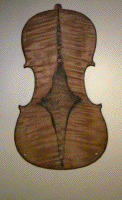
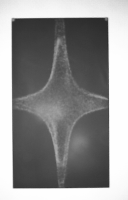
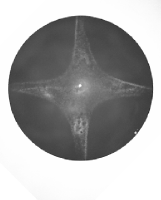
Mode 1 of a violin plate, mode (1,1) of a rectangular
plate and mode (0,2) of a circular plate
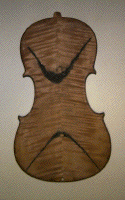
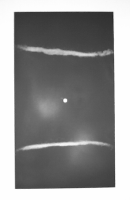 . . . . . . . .
. . . . . . . . 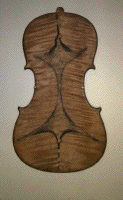
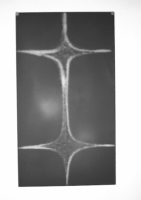
Violin mode 2, rectangle mode (0,2) . . . . . . . .
violin mode 3, rectangle mode (1,2)
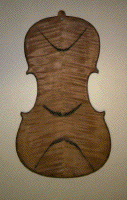
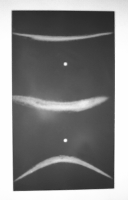 . . . . . . . .
. . . . . . . . 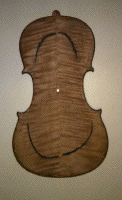
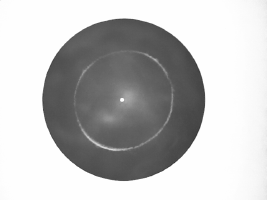
Violin mode 4, rectangle mode (0,3) . . . . . . . .
violin mode 5, circle mode (1,0)
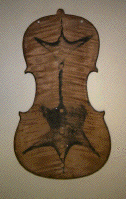
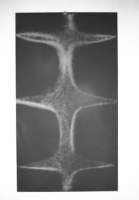 . . . . . . . .
. . . . . . . . 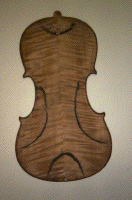
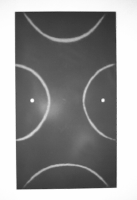
Violin mode 6, rectangle mode (1,3) . . . . . . . .
violin mode 7, rectangle mode (2,2)
The reflection of the flash used to take the photographs
can be seen in the metal plates. These white patches are not
nodes. White sand was used on the black-painted metal plates,
black sand was used on the violin plates. The violin plate
is from a violin made in Germany in about 1870.

